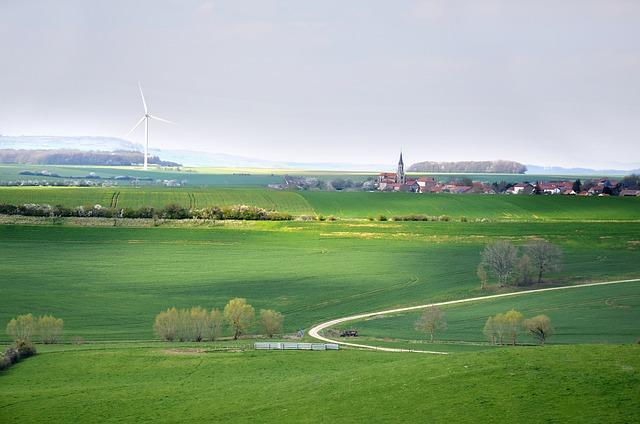Transforming Pakistan: Innovative Public Policy for a Brighter Future
In a world where change is the only constant, Pakistan stands at the crossroads of possibility and potential. As a nation rich in culture, resources, and talent, it faces an array of challenges that require thoughtful and innovative solutions. The landscape of public policy is evolving, with fresh ideas emerging from a tapestry of voices committed to shaping a brighter future. In this article, we delve into the transformative power of innovative public policy as it seeks to address pressing issues—from economic reform and education to environmental sustainability and social equity. By exploring successful initiatives and visionary strategies, we aim to illuminate a path forward for Pakistan, inviting citizens and policymakers alike to embrace a collaborative approach to national progress. The journey towards transformation begins with a single step, and together, we can pave the way for a promising tomorrow.
Redefining Education: Building a Knowledge-Based Economy through Reformed Curriculum and Accessibility
In the quest to build a sustainable and prosperous future, it is crucial to align educational reforms with the pressing demands of a knowledge-based economy. A modernized curriculum that emphasizes critical thinking, digital literacy, and creative problem-solving will empower students to navigate the complexities of an ever-evolving job market. By integrating real-world applications into learning, we can foster a generation that is not just knowledgeable but also innovative. This approach encourages students to engage in project-based learning, thereby promoting collaboration and interdisciplinary connections that are fundamental to success in today’s interconnected world.
Accessibility to quality education is another cornerstone in the transformation of our educational landscape. Ensuring that learning resources are available to all, regardless of geographical or socioeconomic barriers, can significantly enhance participation in the economy. This can be achieved through initiatives such as:
- Online Learning Platforms: Expanding access to digital education resources to rural and underserved communities.
- Scholarships and Financial Aid: Creating opportunities for underprivileged students to pursue higher education.
- Community Learning Centers: Establishing local hubs for skills training and vocational education.
These strategies, when coupled with public-private partnerships, can effectively cultivate an inclusive learning environment that not only uplifts individuals but also bolsters the national economy.

Fostering Sustainable Development: Integrating Environmental Stewardship in Urban Planning
As urban areas continue to expand, the necessity for integrating environmental stewardship into the fabric of city planning becomes increasingly critical. By redefining urban landscapes with sustainability at their core, cities can foster greater resilience against climate change while enhancing the quality of life for their inhabitants. This requires a collaborative approach that involves community engagement, government policies, and innovative technologies to create spaces that not only meet today’s needs but also preserve resources for future generations.
Key strategies could include:
- Green Infrastructure: Implementing parks, green roofs, and permeable surfaces to manage stormwater and reduce urban heat.
- Sustainable Transportation: Promoting public transit, cycling, and walking to reduce carbon footprints and ensure cleaner air.
- Energy Efficiency: Mandating energy-efficient designs in new constructions and retrofitting existing buildings to decrease energy consumption.
To illustrate the impact of these strategies, consider the following table showcasing potential benefits:
| Strategy | Benefits |
|---|---|
| Green Infrastructure | Improves air quality, reduces flooding, enhances urban aesthetics |
| Sustainable Transportation | Lowered emissions, reduced traffic congestion, health benefits |
| Energy Efficiency | Cost savings, reduced energy demand, lower greenhouse gas emissions |

Empowering Citizens: Enhancing Public Participation and Transparency in Governance
In the realm of governance, the journey towards a more inclusive society hinges on the strength of its citizens. Empowering individuals through various platforms fosters an environment where participation flourishes. Initiatives such as town hall meetings, digital forums, and local advocacy groups can ignite civic engagement. By encouraging citizens to voice their concerns and propose solutions, governance becomes a collaborative effort. Consider the impact of:
- Community Workshops: Spaces for dialogue and learning, allowing citizens to understand the policy-making process.
- Online Polling: A tool for gauging public opinion on pressing issues, ensuring that every voice counts.
- Transparency Portals: Digital platforms that provide insights into government spending and decision-making, building trust through accountability.
Moreover, enhancing transparency is essential to foster trust in public institutions. Adopting open data practices enables citizens to access crucial information and hold authorities accountable. For instance, the development of user-friendly dashboards displaying key metrics can reveal insights into budget allocations, project timelines, and service delivery efficiency. The following table presents simple yet effective transparency initiatives:
| Initiative | Purpose | Outcome |
|---|---|---|
| Budget Transparency | Clear access to government budgets | Informed public engagement |
| Open Meeting Policies | Encourage public attendance and involvement | Stronger community ties |
| Feedback Mechanisms | Collect public input on services | Improved governance responsiveness |

Catalyzing Innovation: Leveraging Technology to Drive Economic Growth and Efficiency in Public Services
In an era where technology permeates every aspect of daily life, it’s crucial for public services to harness these advancements to foster economic development and efficiency. By implementing cloud computing in governmental operations, departments can enhance data accessibility, streamline processes, and reduce costs associated with physical infrastructure. Additionally, the integration of Artificial Intelligence (AI) can optimize service delivery, enabling predictive analytics to preemptively address citizen needs and tailor services accordingly. This not only improves responsiveness but also builds trust between the government and the populace.
Moreover, public-private partnerships (PPPs) can facilitate innovative investments in technology, igniting a cycle of growth and improving the overall quality of services. For instance, the development of digital platforms for public services can transform how citizens interact with the government, making processes like tax filing or obtaining permits more user-friendly and efficient. By adopting a proactive approach to innovation, Pakistan can utilize technology not just as a tool for efficiency but as a catalyst for sustainable economic development that ultimately benefits all sectors of society.
The Conclusion
As we stand on the threshold of a new era for Pakistan, the potential for transformation through innovative public policy has never been more palpable. The road ahead is marked by challenges, yet it is equally illuminated by opportunities for meaningful change. By embracing fresh ideas, fostering collaboration, and prioritizing the needs of the citizens, we can cultivate a future that not only addresses the intricate issues of today but also lays the groundwork for sustainable progress.
In this journey, it is crucial for every stakeholder—government, civil society, and the private sector—to come together, harnessing their unique strengths to create a cohesive framework for development. The vision of a brighter Pakistan is not merely a dream; it is a tangible goal that can be achieved through commitment, creativity, and a shared dedication to the common good.
As we conclude this exploration of public policy transformation, let us carry with us the belief that innovation is within reach. Together, we can reshape the narrative of our nation, fostering resilience and growth for generations to come. The future is not set in stone; it is a canvas waiting for us to paint a narrative of hope, progress, and unity. In our hands lies the power to transform Pakistan into a beacon of possibility in the heart of South Asia.



